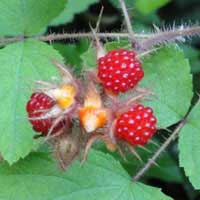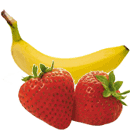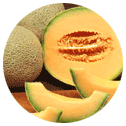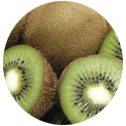 Full List of Fruits
Full List of Fruits  Wineberry fruit
Wineberry fruitWineberry fruit
![]() Introduction of Wineberry fruit
Introduction of Wineberry fruit
Scientific name - Rubus phoenicolasius
Indigenous to northern china, Rubus phoenicolasius is a species of raspberry that is also famous in Japan and Korea. It is during the late spring the flowers are produced on short or very bristly racemes on the tips of these side shoots, each flower 6-10 mm diameter with five purplish red to pink petals and a bristly calyx. Coming to the fruit, they are red or orange in color and are about 1 cm diameter. Produced during the summer or early autumn, they are edible and with regards to botanical terminology, it is not a berry at all, but an aggregate fruit of numerous drupelets around a central core. Ripening of the fruit takes place from early summer. The canes come with red glandular hairs and it is this that gives the species its scientific name from the Latin phoenicus meaning red.
The color of these berries range from green to yellow to orange-red, they are bright and shiny when matured. Ripening usually takes place from late June through July. The calyx protects the fruit as it develops- a residue of the flower- that is covered with the same gland-tipped red hairs as established on the canes, each of which gives off tiny drops of sticky fluid. When it reaches maturity, the calyx folds back. Clammy to certain extent, ripe fruit will be lustrous and bright red with a yellowish-white receptacle - more good spotting out characteristics.
![]() Nutritional Value of Wineberry fruit
Nutritional Value of Wineberry fruit
| Amount per Serving | % Daily Value |
| Calories 727.2 | |
| Calories from Fat 363 | 49% |
| Total Fat 40.3 g | 62% |
| Saturated Fat 15.5 g | 77% |
| Cholesterol 129.2 mg | 43% |
| Sodium 235.0 mg | 9% |
| Total Carbohydrate 34.5 g | 11% |
| Dietary Fiber 0.6 g | 2% |
| Sugars 20.3 g | 81% |
| Protein 33.4 g | 66% |
The wineberry is an excellent source of antioxidants, vitamins, and minerals. Studies have shown that it contains high levels of anthocyanins, which are powerful antioxidants that help protect the body from damage caused by free radicals. It is also high in vitamin C, which helps support the immune system and can help reduce inflammation.
The wineberry is also known for its medicinal properties. Traditionally, it has been used to treat digestive issues, such as diarrhea and constipation, as well as skin conditions. It has also been used to help lower cholesterol and blood pressure. It is even said to have cancer-fighting properties.
In addition to its nutritional and medicinal benefits, the wineberry is a versatile ingredient in the kitchen. It makes a delicious jam or jelly and can be used in fruit salads and other desserts. It can also be used to make wine and other alcoholic beverages.
Overall, the wineberry is a nutritious and flavorful fruit with many uses. It is a great addition to any diet, and its versatility makes it a great ingredient to have on hand in the kitchen.
Resembling the flavorful raspberries in taste, they are succulent, but a bit sourer and contain similar health benefits to that of a raspberry. They are a good source of vitamin C, antioxidants, minerals, and fiber. Having great freezing capacity, the berries are highly fragile and can last only a few days even when kept in refrigerator. The fruit can either be eaten raw or used in desserts, fruit salads, and sauces. They can also be processed into jams and are good in wine, too. They are also made into pies.
![]() Health Benefits of Wineberry fruit
Health Benefits of Wineberry fruit
Wineberry is a newly discovered fruit that is gaining popularity due to its potential health benefits. It is a cross between a raspberry and a blackberry and has a sweet flavor and a deep purple color. The fruit is packed with antioxidants, vitamins and minerals, making it a powerful tool for improving overall health.
Wineberry contains high levels of polyphenols, a type of antioxidant that can help reduce inflammation and free radical damage. These polyphenols can also help protect the body from cancer, cardiovascular disease and other chronic diseases. Wineberry is also a great source of vitamin C, which helps boost the immune system and protect the body from infection and disease.
Wineberry is also high in dietary fiber, which helps to regulate digestion and keep the digestive system healthy. Dietary fiber can also help reduce cholesterol and lower the risk of certain types of cancer. In addition, the fruit is high in potassium, which helps to regulate blood pressure and protect the heart.
Wineberry is also a good source of essential minerals, such as iron, calcium and magnesium. Iron is important for red blood cell production and calcium helps to strengthen bones and teeth. Magnesium is important for muscle functioning and energy production.
Overall, wineberry is a nutritious and delicious fruit that is packed with health benefits. It is high in antioxidants, vitamins, minerals and dietary fiber, making it a powerful tool for improving overall health.
Wine made from wine berry is well-known to accelerate the fat burning process and similarly it helps in reducing weight to a great extent. Besides, they are also known for its unique antioxidants that protects against cell damage and also perform tissue repairmen. Said to prevent the occurrence of cancer especially skin and breast cancer, they also acts as a protective agent to both heart and liver. It's immune boosting enzymes together with Vitamin C and Vitamin E helps in cutting down the inflammatory process and gives a performance boost to immune system.
Wineberry is a fast-growing and vigorous shrub, reaching up to 6 feet in height, with dark green, serrated leaves and pinkish-white flowers. The fruit, which can be harvested from July to September, is red and resembles a raspberry. It has a sweet and tart flavor, with a juicy texture.
Wineberry can be grown in most temperate climates, in areas with full sun and moist, well-drained soil. The shrub should be planted in a location that is sheltered from strong winds, as it can be damaged by strong gusts. Plants should be spaced at least 3 feet apart to allow them to spread out.
To encourage fruiting, Wineberry shrubs should be pruned regularly in early spring, before the new growth begins. This will help to promote a strong, healthy plant and abundant fruit production. The plant should also be fertilized at least twice a year, in the spring and summer.
Harvesting Wineberries can be done by hand or with a berry-picking tool. The ripe fruits should be picked carefully, to avoid damaging the plant. The berries can be eaten fresh, or used to make jams, jellies and other preserves.
Wineberry is a delicious, healthy and versatile fruit that can be enjoyed in many different ways. With proper care and attention, it can be enjoyed for many years.
Rubus phoenicolasius is a vigorous grower that has fugitive cultivation and it can inflate to form dense thickets, crowding out local plants in natural ecosystems. In many states including Pennsylvania they are considered as an invasive weed. They are commonly found in forests, fields, stream and wetland edges, open woods, and roadsides and prefer moist soils in sun or light shade.


















